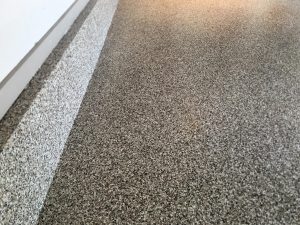The acid staining applications for the concrete rely on a mild acid that opens the pores of a concrete slab. It allows the metallic salts to react with the cement lime to produce a typical color variation. There are reactive acid stains that include greens, reddish browns, and browns. These stains etch the concrete by removing the free lime existing between the sand particles. When specifying the stains, etching should be considered properly. The success of acid stain concrete in Kansas City mainly depends on mitigating the common issues explained here:
Difficulty in Proper Curing of the Concrete:
A difficulty occurs when the contractor does not use moisture for wet curing of the concrete. This process strengthens the concrete, especially when using acid staining. Most importantly, no membrane should be added to the top for inhibiting the penetration of acid into the concrete.
To avoid this problem, the contractors use wet curing or concrete curing compounds that work as an alternative. Some compounds can cure and seal the surface but, they cannot retain the moisture for a long time. Therefore, you should prefer thick and tough coatings for the acid stains. Apply multiple coats to seal the stain properly by filling the pores created by acid etching.
Lack of Sealing Capabilities in the Curing Compounds:
An expert flooring contractor can guide you in the selection of durable and effective curing compounds having strong sealing capabilities. Typically, the acid stains can react with the soft concrete paste in which the free lime turns into a harder substance over time. To eliminate this issue, the floors can be ground deeply for removing the curing compound.
These are the common issues that may occur in stained concrete in Kansas City. You can prevent them by hiring an expert contractor.

